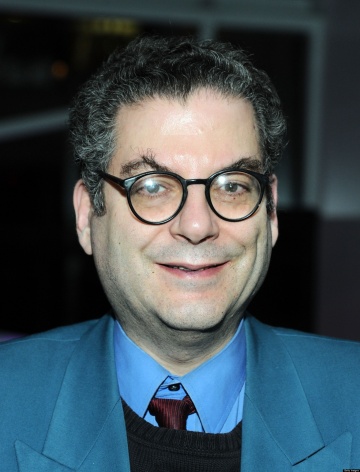Columbia College | Columbia University in the City of New York
Village Voice Print Edition, RIP by Michael Musto ’76
When the Village Voice went free in 1996, I feared for my job. I had done my weekly nightlife and entertainment column, “La Dolce Musto,” there since 1984, and counted on the freedom and prestige it afforded me, not to mention the money and office supplies. The Voice was my home base — a legendary alternative weekly that had fostered passionate reporting since its founding in 1955, and a place where I had been allowed to flourish by tackling unconventional topics in unorthodox ways. I wasn’t enamored with the idea of having the paper placed in red boxes stationed around the city, which often ended up being so soiled and smelly it almost seemed life-threatening to take a copy. But against all odds, the plan worked. The paper — which had jumped to an untenable $1.25 cover price — was able to stay alive by becoming a grab away.
More than two decades later, this past August, the Voice announced that it was ending its print run and going completely digital. Again, I was amazed — meaning that the paper Voice had lasted so long. Obviously, print was being eclipsed by web-related material and those boxes were getting dirtier and dirtier. Furthermore, the underground culture the Voice specialized in is now part of the mainstream, and virtually everyone covers leftie politics, identity-related issues and drag queens. At this point, I’d been laid off from the Voice in 2013, then brought back as an entertainment correspondent in ’16, and then hardly used at all in ’17 — but I still had a fond feeling for its place in history as a bastion of arts coverage, investigative reporting, and even fanciful fluff and satire. The Voice had broken ground as a place where people of color, LGBTs and the counterculture were welcome to take center stage and address important sociopolitical topics as seen through a personal lens. Through the years, the print edition had carried my interviews with engagingly mouthy celebrities (like Zsa Zsa Gabor and Carrie Fisher), my reports on up-and-coming nightclub personalities (RuPaul, Kiki and Herb) and my screeds against homophobia back when I was one of the few openly gay people in journalism. As such, I was constantly using print to demand more sensitivity from corporations, entertainers and politicians who were misstepping with their phobic words and deeds.
All those years, the print Voice was a treasure — something to hold and commune with, to absorb every page of (starting with the legendary Jules Feiffer cartoons) and to pass around in order to turn your friends on to your favorite article that week. The content was brash and bold, and it was all true, too — every week, I’d be on the phone with the fact checker, going over each detail — so the paper’s refreshing iconoclasm had a credence that gave it heft. But as the Voice’s urgency dwindled, inevitably, it moved to a different venue. And it’s not worth crying over. Lamenting the loss of the print edition, when it’s merely reconfiguring as a site, is like pining for the days of horse-and-buggies, typewriters and landline phones. The communications landscape has changed to the point where very few people I know who are under 50 would even dream of picking up a print publication. Why would they when they can just run their fingers around the device in their pocket? And that actually might not be disastrous for the state of journalism, because the Internet is capable of embracing in-depth reporting — or any kind of reporting. You can put unlimited amounts of articles there — it’s infinite — and it’s immediate, too.
Fortunately for the Voice, they have long known the value of constructing a web presence. I remember doing web-only items (and also podcasts) back when many other papers and magazines didn’t have the foresight to go there. The fact that the Voice will now be all-digital means that perhaps they can build on what they’ve learned about creating a site full of instant-access service pieces, reviews and opinion. It will never again approach the impact of its print heyday, but that reduction in stature already happened ages ago. An alternative weekly doesn’t have the specialness it used to, even if it’s now more hourly than weekly. But the Voice is still breathing, and might even serve a purpose, albeit with a bare-bones staff.
The Voice has a big challenge ahead. Can it stay alive? Quite possibly. Will I throw out my old Voices? No way.

More “Lion’s Den”
- 1 of 5
- ›

